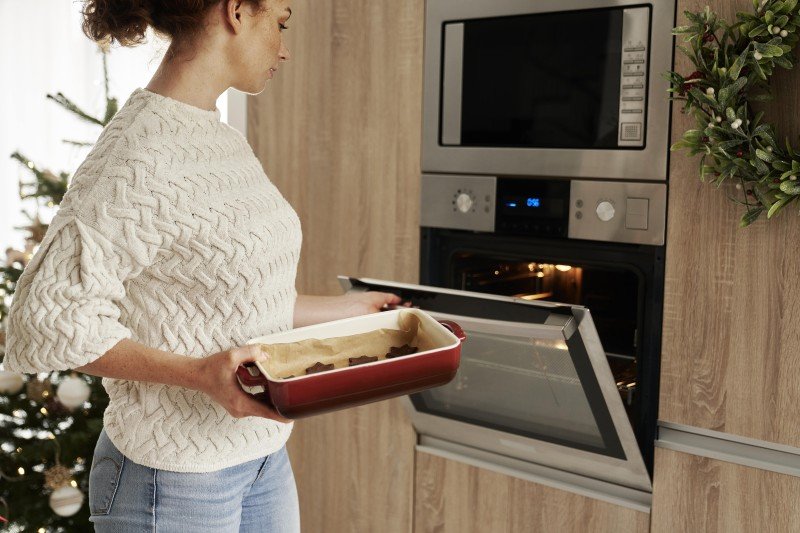The Most Underrated Companies To Follow In The Electric Oven & Hob Industry

Understanding Electric Ovens and Hobs: Your Guide to Cooking Efficiency
Electric ovens and hobs have actually transformed the culinary landscape, offering home cooks and professional chefs a reputable, effective, and consistent method to prepare meals. As technological improvements continue to affect home appliance style, the efficiency and performance of electric cooking systems have substantially improved. This article looks into the features, advantages, and considerations surrounding electric ovens and hobs, providing a comprehensive overview for anyone looking to upgrade or buy kitchen appliances.
What Are Electric Ovens and Hobs?
Electric ovens are kitchen appliances designed for baking, broiling, roasting, and other cooking approaches that need controlled heat. They use electric coils or glowing heat elements to create and keep the desired temperature. Electric hobs, typically referred to as electric cooktops, are flat surfaces with heating aspects that permit pots and pans to be positioned directly on them for cooking.
Table 1: Key Differences Between Electric Ovens and Hobs
| Function | Electric Oven | Electric Hob |
|---|---|---|
| Primary Function | Baking, roasting, broiling | Heating pots and pans for cooking |
| Heating Method | Electric coils or glowing aspects | Induction, radiant, or ceramic aspects |
| Operation Temperature Range | Approximately 500 ° F (260 ° C | ) Varies by design; typically lower than ovens |
| Cooking Styles | Versatile; appropriate for various dishes | Primarily stovetop cooking methods |
| Area Requirement | Usually built into kitchen cabinetry | Typically standalone or built-in alternatives |
| Energy Consumption | Normally higher, depending upon use | More energy-efficient with induction hobs |
Benefits of Electric Ovens and Hobs
When thinking about electric ovens and hobs, it's vital to understand their numerous benefits, which can boost the cooking experience.
1. Constant Heating
Electric ovens and hobs provide even and constant heating, which is important for numerous cooking techniques. This ensures that meals prepare uniformly, lowering the opportunities of overcooking or undercooking certain locations of food.
2. Safety Features
Modern electric ovens and hobs come geared up with various safety features to avoid mishaps in the kitchen. For instance, numerous models consist of automated shut-off functions, hot surface area indicators, and kid security locks.
3. Easy to Use
Unlike gas models, electric ovens and hobs are simple and user-friendly. Ovens On Sales of turning on a dial or pushing a button makes them available for cooks of all skill levels.
4. Versatile Cooking Options
With different cooking techniques possible, from baking to simmering, electric designs are flexible adequate to accommodate a vast array of cooking styles and choices.
5. Cleaning up and Maintenance
Electric ovens normally feature smooth surface areas that are easy to tidy, especially designs with self-cleaning capabilities. Hobs, particularly induction types, also supply a flat surface area that is easy to wipe down, making upkeep a breeze.
Popular Types of Electric Ovens:
- Conventional Ovens: Ideal for standard baking and roasting.
- Convection Ovens: Circulate hot air for quicker, even cooking.
- Microwave Ovens: Use electro-magnetic radiation for quick heating and cooking.
- Toaster Ovens: Small counter top ovens for fast jobs.
Popular Types of Electric Hobs:
- Induction Hobs: Utilize electromagnetic fields for fast heating and energy effectiveness.
- Glowing Hobs: Feature electric coils that warm up to cook food.
- Ceramic Hobs: Offer a smooth surface area and are easy to clean.
Considerations When Choosing Electric Ovens and Hobs
While electric ovens and hobs offer many advantages, a number of factors should be taken into consideration to guarantee the best fit for your kitchen:
1. Space Availability
Assess the available kitchen area before making a purchase. Determine whether you require an integrated model or a freestanding device, and determine the measurements thoroughly to guarantee a good fit.
2. Cooking Needs
Determine your cooking practices and preferences. If you regularly bake large quantities or cook complex meals, think about an oven with sophisticated functions like convection settings or numerous racks.
3. Energy Efficiency
Try to find energy-efficient models that can help conserve on utility costs over time. Energy Star-rated devices can be especially economical.
4. Budget plan
Set a reasonable budget plan that represents both the preliminary purchase and continuous operating expenses. In addition to the home appliance expense, aspect in installation and possible repair work.
5. Extra Features
Think about whether functions like smart innovation, programmable settings, or steam cooking alternatives are necessary for your cooking design.
FAQ Section
Q: How do I tidy my electric oven?
A: Most electric ovens included self-cleaning choices. If your design does not have this feature, permit the oven to cool, then clean down surface areas with a mix of baking soda and water or a business oven cleaner.
Q: Is induction cooking safe?
A: Yes, induction cooking is considered safe as the heating element just triggers when suitable pots and pans touches with it, lowering the risk of burns.
Q: How long does it take for an electric oven to pre-heat?
A: Preheating times vary based on the oven's design and temperature level setting however normally vary from 10 to 15 minutes.
Q: Can I use any pots and pans on an induction hob?
A: No, only ferromagnetic cookware works with induction hobs. Look for induction compatibility before usage to prevent damage.
Q: What is the distinction in between a convection oven and a traditional electric oven?
A: A stove consists of a fan that distributes hot air, guaranteeing even cooking and decreased cooking times compared to a traditional electric oven, which does not have this function.
Electric ovens and hobs provide a modern-day option to numerous cooking requirements, providing performance and reliability in the kitchen. As customers examine their choices, comprehending the features, types, and considerations will allow them to make informed choices. Whether one is an occasional cook or a cooking enthusiast, electric appliances can enhance the general cooking experience, bringing benefit and imagination to the table.

